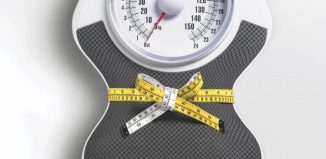Some surprising new exercise research
Moderate exercise for a moderate amount of time may be the most effective
Most of us, myself included, have a love-hate relationship with exercise. Sometimes it’s difficult to get motivated or carve out the time, however, the feeling afterward can be rejuvenating. For the longest time, with a few exceptions, the belief has been that exercise always has positive effects. However, this may not be the case for everyone, according to a new study’s findings. Let’s look at the potential downsides and upsides of exercise, as well as the optimal workout intensity.
The downsides of exercise
Those with certain diseases, such as heart failure and hypertrophic cardiomyopathy, need to be especially cautious when exercising. However, when heart failure patients do exercise, some trials, like the HF-ACTION trial, show improvements in symptoms, exercise capacity and quality of life (J Am Coll Cardiol. 2011;58:561-569).
A new study suggests that exercise may have negative cardiovascular and diabetes impacts on 10 percent of the population (PLoS One. 2012;7(5):e37887. Epub 2012 May 30). That’s scary. To make matters worse, the effect was random — there was no one cohort or group affected. When you analyze the study, however, there are some potential weaknesses.
The study endpoints included biomarkers, such as HDL “good” cholesterol levels, blood pressure, triglycerides and insulin levels. Many things can affect these endpoints. For example, I had a patient who exercised in the morning, yet his blood glucose (sugar) was worse postexercise. It turned out he was drinking pomegranate juice before exercising, which increased his glucose levels.
Also, as I mentioned in last week’s article, the cholesterol marker, HDL, may not have protective effects nor be directly correlated to cardiovascular disease. Therefore, we really don’t know what it means when HDL levels go down with exercise.
Better endpoints for this study would have been outcomes measurements, such as overall mortality, cardiovascular mortality and morbidity (sickness), and cardiovascular event rates. I worry, as do others, that people may use this study as an excuse not to exercise. I think the message should be: Use caution when exercising, but do exercise. Let’s look at why.
The upsides
We know that exercise has tremendously positive impacts on a multitude of diseases and disorders, such as obesity, heart disease, stroke, diabetes, Alzheimer’s, rheumatoid arthritis, migraines and cancer.
One recent study shows exercise is directly related to improvements in sleep (Am J of Med. 2012;125(5):485-490). In the epidemiologic study, the hours of exercise a week decreased the occurrence of mild and moderate sleep-disordered breathing 24 percent and 33 percent, respectively. The opposite was also true: As the hours of exercise declined in some patients, sleep-disordered breathing worsened.
What about longevity?
There are two recent studies that show exercise helps to improve longevity. In the Copenhagen City Heart Study, the results showed that light jogging at a slow to moderate pace for 1 to 2 1/2 hours a week was ideal. The mean increase in longevity was 6.2 years in men and 5.6 years in women. Even elderly patients saw longevity improvements. There were improvements in insulin levels, bone density and lipid profiles which contributed to the longevity effect. This study was observational, with 20,000 participants over a 35-year duration (EuroPRevent 2012: Abstract). The good news is that you don’t have to be an elite athlete to achieve the increased longevity.
In a second study, those who jogged at a modest pace saw a three-year increase in longevity. Those in the “low volume” activity group, defined as 92 minutes of exercise per week, realized a 14 percent reduction in the risk of death and a three-year increase in life expectancy when compared to the sedentary group (Lancet. 2011 Oct 1;378(9798):1244-53). In other words, 15 minutes of exercise a day has a powerful effect on longevity. This was a very large prospective (forward-looking) observational study.
How best to approach exercise?
In a study presented at the American College of Sports Medicine, there was a 19 percent reduction in the risk of mortality for those who “ran” at a modest pace — defined as 5.5 to 6 miles per hour, or a 10- to 11-minute mile — compared to those who did not run, those who ran more than 20 miles per week, and those who ran faster than 7 mph (although the last two groups were less common). This benefit was seen as long as participants ran between 1 and 20 miles per week. Therefore, a modest distance at a modest pace resulted in the most benefit. This study was part of the Aerobics Center Longitudinal Study at the Cooper Institute in Dallas, Texas.
Thus, it appears that the benefits of exercise far outweigh the risks, even in patients who have heart failure. The most beneficial levels of exercise seem to be in the modest zone for both duration and intensity. This does not mean you can’t exercise with more intensity, with your doctor’s permission. However, it does imply that inactivity is far more dangerous than exercise: There are several studies showing that inactivity reduces longevity and increases cardiovascular events.
Dr. Dunaief is a speaker, author and local lifestyle medicine physician focusing on the integration of medicine, nutrition, fitness and stress management. For further information, go to the website www.medicalcompassmd.com and/or consult your personal physician.






